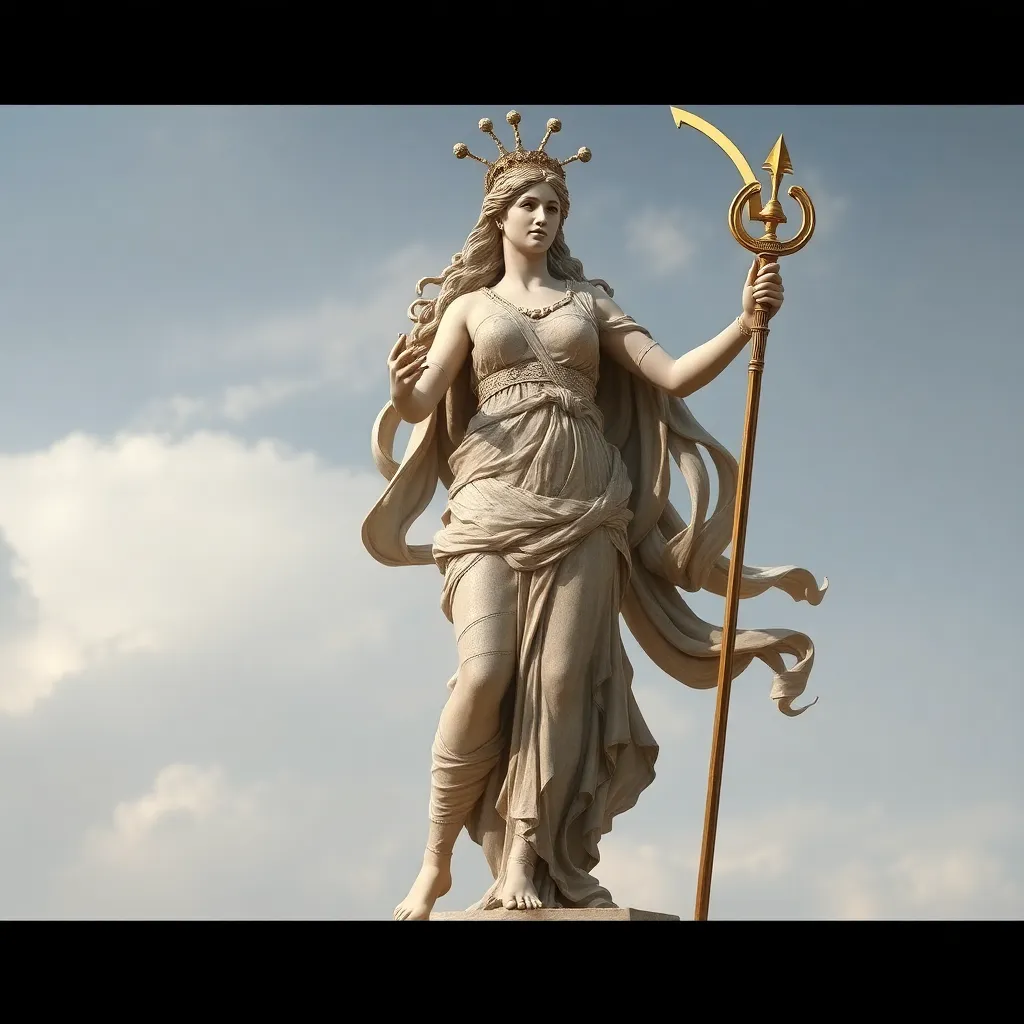The Myths of Artemis: A Study of Her Impact on Society
I. Introduction
Artemis, one of the most revered deities in Greek mythology, embodies the spirit of the wild and the protector of the vulnerable. Often depicted as a huntress, she is celebrated not only for her prowess in hunting but also for her complex role as a woman in ancient Greek society. Understanding Artemis and her myriad myths is crucial for appreciating the cultural and societal values of ancient Greece, as well as their influence on contemporary interpretations of womanhood and nature.
This article aims to explore the rich tapestry of myths surrounding Artemis, her origins, her role as a goddess, and her enduring legacy in both ancient and modern contexts.
II. The Origins of Artemis: Birth and Early Myths
Artemis was born to Zeus and Leto on the island of Delos, alongside her twin brother Apollo. Her birth narrative is steeped in themes of struggle and resilience, as Leto faced persecution from Hera, Zeus’s wife, who was jealous of her husband’s infidelity.
Key myths from Artemis’s childhood include:
- The story of her birth, where she assisted her mother in delivering Apollo, showcasing her nurturing nature.
- Her vow of chastity, which set the tone for her character and her relationship with men and the concept of motherhood.
- Her encounters with various creatures of the wild, symbolizing her deep connection to nature and wildlife.
The symbolism of her origins plays a significant role in shaping her character; as a goddess born under difficult circumstances, she embodies strength, independence, and a fierce protective instinct.
III. Artemis as the Goddess of the Hunt
Artemis is perhaps best known as the goddess of the hunt. This aspect of her identity is not just about chasing animals; it reflects a deeper connection to the natural world and the balance of life and death within it.
In her role as a huntress, Artemis is often depicted with a bow and arrows, accompanied by a pack of hounds, symbolizing:
- Her mastery over the wilderness and the skills required for hunting.
- The sacred relationship between humans and nature, emphasizing respect for wildlife.
- The importance of hunting in ancient Greek society as both a means of sustenance and a rite of passage.
Her impact on ancient Greek society was profound, as she was not only a figure of admiration but also a source of inspiration for hunters, emphasizing ethical practices and the reverence for nature.
IV. Artemis and Womanhood: Protector of Women and Children
Artemis is often seen as a protector of women and children, reflecting her nurturing side. Numerous myths highlight her protective qualities, such as:
- Her defense of the innocence of young women and her punishment of those who violate that innocence.
- Her role as a goddess who assists women in childbirth, ensuring safe deliveries.
The relationship between Artemis and women in ancient Greek culture was complex. She represented:
- The ideal of independence and strength, as she chose to remain a virgin.
- The duality of chastity versus motherhood, embodying both roles in different narratives.
This duality made her a multifaceted figure, resonating with women who sought empowerment and autonomy in a patriarchal society.
V. The Cult of Artemis: Worship and Rituals
The worship of Artemis was widespread, with major temples and sacred sites dedicated to her across ancient Greece, including:
- The Temple of Artemis at Ephesus, one of the Seven Wonders of the Ancient World.
- The sanctuary at Brauron, where young girls participated in rites of passage.
Ritual practices and festivals dedicated to Artemis were vital for community identity and cohesion. Notable celebrations included:
- The Brauronia, where young girls dedicated themselves to Artemis.
- The Artemis Orthia, celebrated in Sparta, which involved rites of passage for young boys and girls.
The role of her worship was integral in fostering community bonds and reinforcing societal values related to nature, femininity, and protection.
VI. Artemis in Art and Literature
Artemis’s portrayal in ancient art forms is rich and varied, reflecting her multifaceted nature. She is frequently depicted in:
- Vase paintings that illustrate hunting scenes, emphasizing her role as a huntress.
- Sculptures showcasing her beauty and strength, often with animals by her side.
Literary references to Artemis can be found in works by famous poets and playwrights, such as:
- Homer in “The Iliad” and “The Odyssey,” where she is invoked in the context of hunting and nature.
- Ovid in “Metamorphoses,” where her stories intertwine with themes of transformation and loss.
The evolution of her portrayal through the ages showcases how perceptions of femininity and power have shifted, yet her essence remains a symbol of independence and strength.
VII. Modern Interpretations and Relevance of Artemis
In contemporary society, Artemis continues to resonate, particularly in discussions surrounding feminism and empowerment. Modern interpretations highlight:
- Her role as a symbol of female autonomy and strength in a world that often seeks to undermine these qualities.
- Her influence on feminist narratives, advocating for women’s rights and independence.
Artemis has also been reimagined in popular culture, appearing in:
- Books and films that depict strong female characters inspired by her mythos.
- Artistic expressions that celebrate nature and wildlife, reflecting her enduring connection to the environment.
These modern interpretations keep her legacy alive, allowing new generations to connect with her story and values.
VIII. Conclusion
Throughout history, Artemis has had a profound impact on society, symbolizing the power and complexity of femininity, the importance of nature, and the values of protection and independence. Her myths and the cultural narratives surrounding her have evolved but continue to resonate with contemporary audiences.
As we reflect on the enduring legacy of Artemis, it is clear that her stories offer rich insights into the intersections of mythology and society. Further exploration of these connections can enhance our understanding of the past and inspire future generations to appreciate the strength and resilience of women in all aspects of life.




